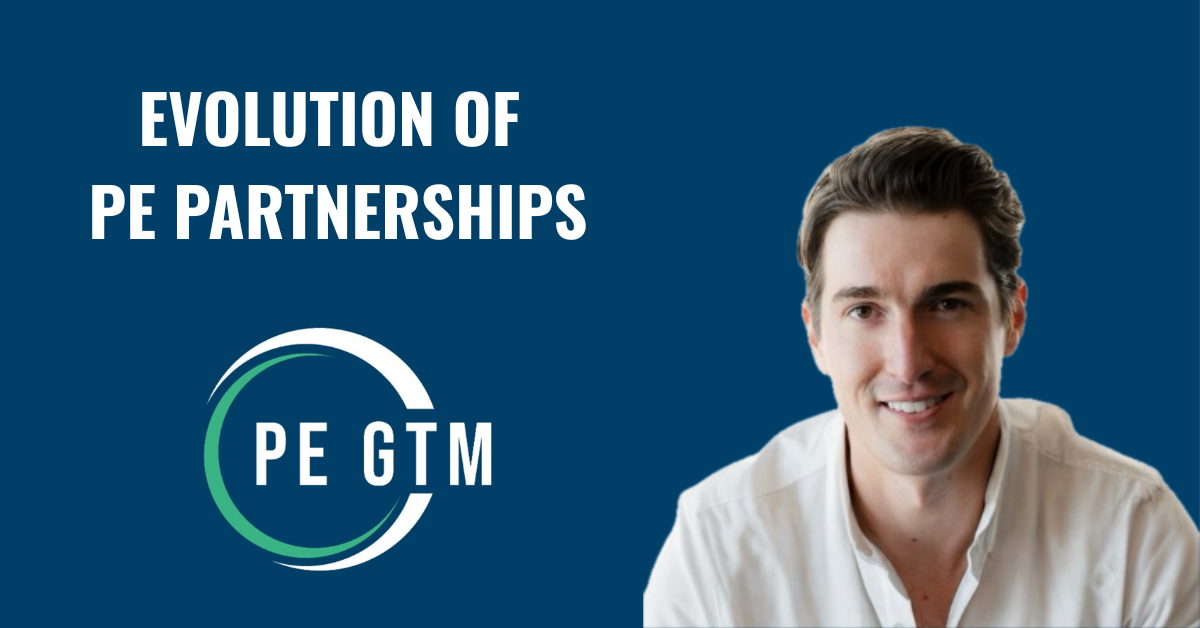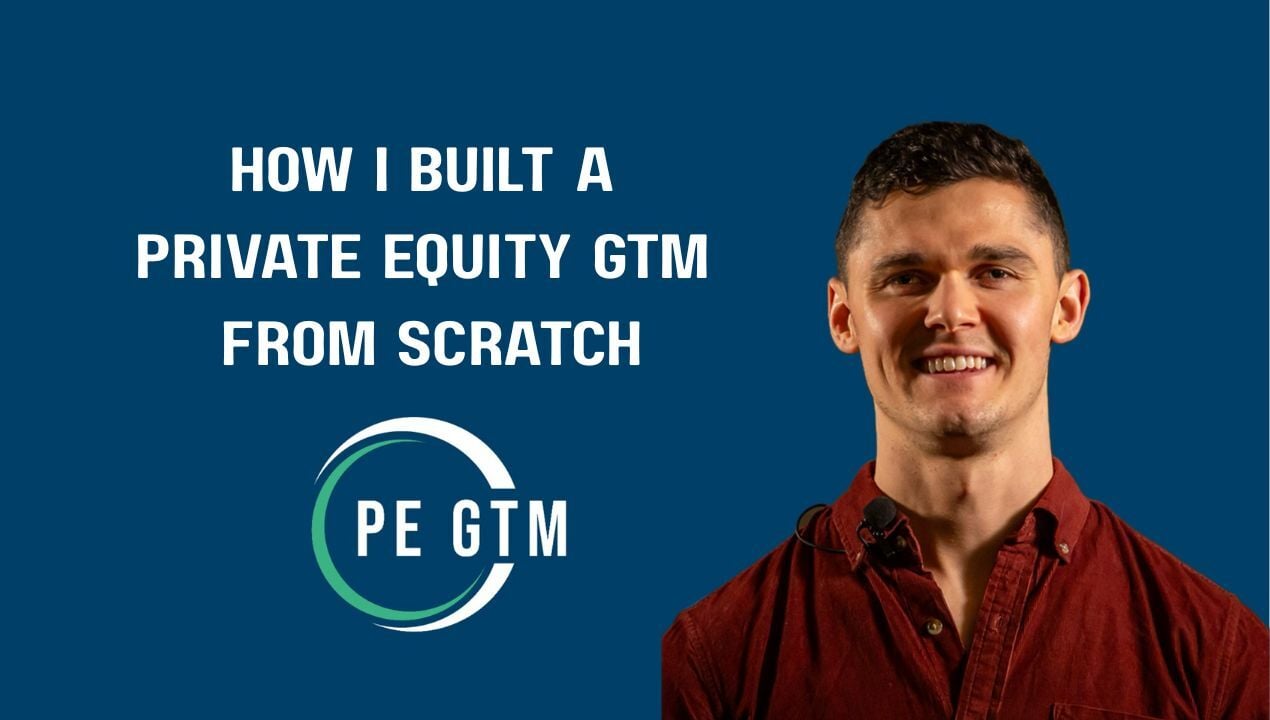
How I Build a Private Equity GTM from Scratch
In the summer of 2023, I took a risk.
At the time, I was a seller at ProsperOps, working a well-oiled inbound lead flow and closing deals at a company that had incredible product-market fit. But I had an entrepreneurial drive to build something bigger than just my own quota. I saw a new opportunity emerging, one that wasn’t on anyone’s roadmap yet: Private Equity (PE) partnerships as a scalable go-to-market (GTM) motion.
But to pursue it, I had to step away from the safety net of inbound leads. I had to bet on an idea that had no precedent inside the company. And I had to prove that we could turn one PE relationship into many deals, exponentially expanding our pipeline.
This is the story of how I built a PE GTM engine from scratch; why it worked, what almost broke me, and why I believe every high-growth SaaS company should invest in this motion.
Recognizing the Opportunity: A Simple Email with a Big Impact
I didn’t go into this role looking to revolutionize our sales strategy. At first, I was just looking for a way to close more deals.
One day, we had a deal stalled at the finish line. The prospect was interested, but final approvals were dragging out. That’s when we reached out to the company’s PE operator and asked for help. Together, we crafted a simple email that framed ProsperOps as a cash flow-positive initiative; a "no-brainer" investment. The PE operator sent it to the CTO and CFO.
The deal closed less than a week later.
That moment was a lightbulb. If a single email from a PE operator could accelerate a deal that was otherwise stuck, how much more influence could these firms have across all their portfolio companies?
At the same time, ProsperOps had recently taken investment from H.I.G. Growth. Through them, we had received a handful of leads from other H.I.G. portfolio companies. That got me thinking: What if we weren’t just passively receiving PE-sourced leads? What if we built a systematic motion to turn these relationships into a repeatable, high-growth sales channel?
So, alongside our Head of Partnerships and Chief Sales Officer, we crafted an experiment. I would step out of our traditional sales round-robin, stop benefiting from inbound leads, and build the PE motion from the ground up.
The Leap: From Seller to Builder
Going all-in on PE partnerships was terrifying.
I was walking away from a proven lead flow and stepping into a blank slate. I had no pipeline. No roadmap. No guarantee this would work.
The first few months were brutal. PE firms don’t just throw their portfolio companies at random vendors. They need trust, credibility, and clear proof of value. I spent weeks at a time just educating PE operating teams, walking them through ProsperOps’ methodology and why it mattered to their portfolios. Only after that would they consider introducing us to a single portfolio company for a test run.
For six months, this was my only source of pipeline. One portfolio company at a time. One conversation at a time. It was slow. It was frustrating. And at times, it felt like I had made a huge mistake.
By Month 2, my commission checks were almost non-existent.
By Month 4, I was questioning whether I had made the right call.
By Month 6, something shifted.
We had finally earned the trust of a few PE firms, and those pilot portfolio companies started closing. Suddenly, firms that had been cautious about introducing us to their portcos started bringing us into multiple companies at once.
By Month 7, the floodgates opened.
The Tipping Point: A One-to-Many Revenue Engine
The moment I knew this motion was unstoppable was when we signed a deal with an upper middle-market PE firm after a 10-month proof of concept and negotiation.
Within weeks of closing that deal, we had double-digit leads from their portfolio. These companies moved through the sales cycle faster than any other channel we had seen. They were a perfect fit for our ideal customer profile (ICP). And most importantly, PE operators and board members were actively influencing these deals.
This wasn’t just another channel. It was a one-to-many revenue engine.
By Q3 2023, PE-sourced deals were outpacing every other lead channel in both speed and volume.
By Q4 2023, this was a board-level conversation.
By January 2024, I had officially transitioned into focusing on only the PE relationship.
Instead of running individual sales cycles, I was now:
- Deepening partnerships with key PE firms.
- Taking inbound PE-generated leads and distributing them to the broader sales team.
- Reporting back to PE firms on the efficiency and EBITDA impact we were making across their portfolios.
Earning PE Trust: Speaking on Their Stages
Once PE firms started seeing the impact firsthand, something even more powerful happened: they started inviting us to their private events.
I began speaking at PEI, Actum Group, Markets Group, LPGP Connect, and other private equity-focused conferences. These weren’t generic industry events. They were filled with PE operating partners looking for ways to drive efficiency and profitability across their investments.
At first, it was intimidating. Many of these operators had decades of experience in finance, M&A, and operational efficiency. But I quickly realized something:
I knew cloud cost optimization better than anyone in the room.
While some are very knowledgeable in the space, PE operators aren’t striving to be just cloud experts. Their focus is on maximizing portfolio value, not understanding the nuances of cloud discount structures. By combining my technical sales expertise with my PE learnings, I became the go-to expert on how cloud cost efficiency drives EBITDA growth and enterprise value.
That credibility led to inbound interest from PE firms for the first time. Instead of me reaching out to them, they were coming to me.
Lessons Learned: Why PE GTM Matters
This experience changed how I think about sales. It’s no longer just about closing a deal. It’s about understanding the full investment lifecycle of a portfolio company.
If I had to give advice to anyone trying to build a PE GTM motion, it would be this:
- It’s going to take a few quarters. Most PE firms won’t introduce you to their portcos until you’ve earned their trust. Be patient.
- Don’t show up unprepared. PE operators don’t care about your generic sales pitch. You need to understand their portfolio, their investment thesis, and how your solution impacts their exit strategy.
- Think like an investor. PE firms don’t think in 12-month sales cycles. They think in 3-5 year horizons. If you can align with that, you’ll stand out.
What started as an experiment turned into a revenue machine. What was once a personal risk became a key driver of ProsperOps’ growth. And looking ahead, I believe this motion will only become more critical for companies looking to sell into the mid-market and enterprise.
Because when you win over one PE firm, you’re not just winning a customer.
You’re unlocking an entire portfolio.


